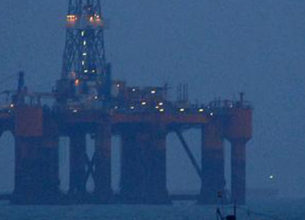Madras HC quashes Tamil Nadu Pollution Control Board’s Notice
15, Dec 2022

Prelims level : Environment Impact Assessment
Mains level : GS-III Conservation, Environmental Pollution and Degradation, Environmental impact assessment.
Why in News?
- The Madras High Court has recently quashed a show cause notice issued by Tamil Nadu Pollution Control Board (TNPCB) to Isha Foundation on November 19, 2021, with respect to launching prosecution for having constructed several buildings at Velliangiri hills between 2006 and 2014 without obtaining prior environmental clearance.
Environmental Clearance:
- Environmental Clearance is conducted to assess the impact of the planned project on the environment and people and to try to reduce the impact of the same.
- Currently in our country the environmental clearance process is carried out for 39 types of projects.
- In India the National Green Tribunal (NGT) has been established under the National Green Tribunal Act for effective disposal of cases regarding environmental protection and forest conservation.
- The tribunal was set up to control emissions and maintains the optimum level.
How Environmental Clearance is done?
- Environmental clearance is granted by the ministry of environment, and the State Environment Impact Assessment Authority (SEIAA), under the Environment Impact Assessment (EIA) notification of 2006.
- This notification details the process for granting EC.
- It includes the structure of the EIA report, process of appraisal, and the conditions and safeguards that a company has to implement, including what the environment management plan should be.
- The appraisal is carried out by the Expert Appraisal Committees (EACs), which largely comprise of ‘professionals and experts’. The appraisal procedure clearly states, ‘in case the project or activity is recommended for grant of EC, then the minutes shall clearly list out the specific environmental safeguards and conditions.
- EIA Notification 2006 was issued under the sub-rule (3) of Rule 5 of the Environment (Protection) Rules, 1986. This rule gives powers to the central government to impose certain restrictions and prohibitions on the location of an industry, or the carrying out of processes and operations in an area, based on their potential environmental impacts.
- EIA Draft Rules 2020 was released last year which is still under review due to the proposed sensitive laws.
What are the drawbacks?
- EC process in India involves a lot of paperwork with nothing to show on the ground.
- Almost every project is cleared by EACs which consist of people not accountable to anyone.
- There is hardly any post-clearance monitoring. Hence, non-compliance of the safeguards and conditions is rampant.
- Projects are granted EC after they have already come up.
- Primary goal of the EC process is to ensure that projects are located and constructed in such a manner that they have the least possible impact on the environment. Unfortunately, the governments could not uphold this focus
- The present clearance process with its sequential hurdles either forces a project proponent to give up the venture, as was reportedly the case with major road projects of late, or burdens the project with time and cost overruns.
Way Forward:
These are few Recommendations given by the CAG:
- EC letters should clearly mention cost of activities under the Environmental Management Plan along with the timelines for their implementation.
- The capital and revenue expenditure amount to be spent on CSR cost should be distinctly specified in the EC letter.
- EC conditions should be more specific for the area to be developed under green belt and species is to be planted in consultation with forest/agriculture department along with post EC third party evaluation.
- While prescribing the conditions of environment clearance, the details about installation of monitoring stations and frequency of monitoring of various environment parameters in respect of air, surface water, ground water, noise, etc. should be clearly mentioned.
- It also said that the conditions of environment clearance should be compatible with the nature and type of project in order to avoid non-uniformity in similar kinds of projects.









